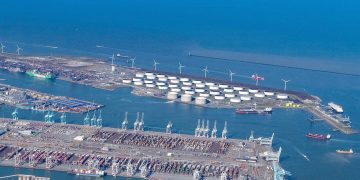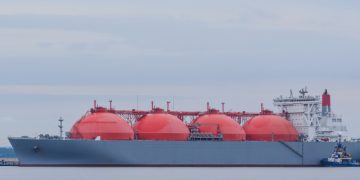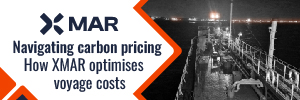The Port of Antwerp-Bruges faced a challenging first quarter in 2025, marked by a decline in total cargo throughput but buoyed by strong container performance.
As informed, in the first quarter of 2025, Port of Antwerp-Bruges handled 67.7 million tonnes of cargo, a drop of 4.0% compared to the same period last year. This decline was largely driven by a sharp decrease in bulk volumes, while container throughput recorded growth.
Jacques Vandermeiren, CEO Port of Antwerp-Bruges said: “We are in particularly uncertain times, which makes it difficult to predict what 2025 will bring next. But as in previous crises, our port is showing resilience and operational reliability. That stability is critical, both for our customers and for the broader economy. At the same time, the protectionist measures taken by the United States make it clear that Europe needs to make a stronger commitment to robust economic policies in order to strengthen our industry and anchor its strategic position.”
Container throughput is strong and bulk flows are volatile
Container throughput served as a key growth engine in the first quarter, rising 4.6% in tonnage and 4.5% in TEUs compared to the same period in 2024, despite geopolitical uncertainties and container alliance restructuring. The transition to the new alliances and strikes and congestion at other ports did, however, result in longer container dwell times and therefore put increased pressure on terminal capacity.
Port of Antwerp-Bruges’ market share in the Hamburg-Le Havre Range increased to 30.5% in 2024, and on a global level, the port climbed from 15th to 14th place in the ranking of the largest container ports.
Liquid bulk trade
Liquid bulk saw the steepest decline (-19.1%), with sharp declines in gasoline, naphtha and LNG. Contributing factors included changed market conditions in Africa, reduced naphtha demand from the petrochemicals industry and EU sanctions on Russian LNG transshipment.
The throughput of chemicals increased by 10.9%, mainly thanks to a significant increase in biofuels (+128%) Without that boost, the chemical segment would have seen a slight year-on-year drop (-1.7%). Furthermore, in other sectors:
-
Conventional general cargo declined by 5.4%, mainly due to a 14.3% drop in iron and steel throughput caused by a weak economic climate and import quotas.
-
RoRo throughput rose slightly by 1.1%, despite an 11.3% decrease in new car shipments, reflecting challenges in the European automotive industry.
-
The decline in vehicle exports was offset by growth in other RoRo cargoes, such as unaccompanied freight.
-
Dry bulk remained nearly stable, with a minor decline of 0.8%.
The impact of U.S. import tariffs remains limited for now
The impact of U.S. import duties on traffic in Port of Antwerp-Bruges remains limited for now. Although some companies are acting in anticipation of tariffs, no clear export acceleration toward the U.S. has been noticeable so far. Container exports rose by 3.2%, steel saw a temporary peak in January, and 20% fewer cars were exported to the US, in line with the overall decline in car exports.
At the same time, structural factors, such as disrupted shipping schedules in containerised liner trade, model changes on the car market and temporary production suspensions, put increased pressure on terminals.
So while the immediate impact remains limited for now, it is clear that further developments in the area of trade tariffs could have an effect on the logistics chain in the coming months.



























































